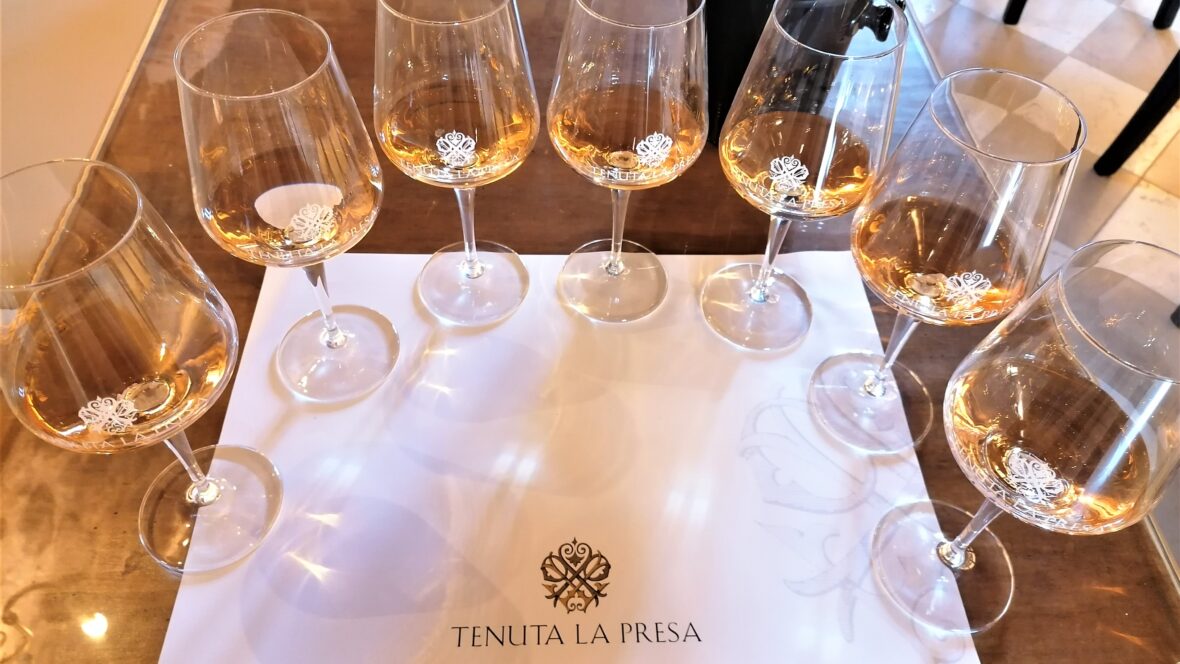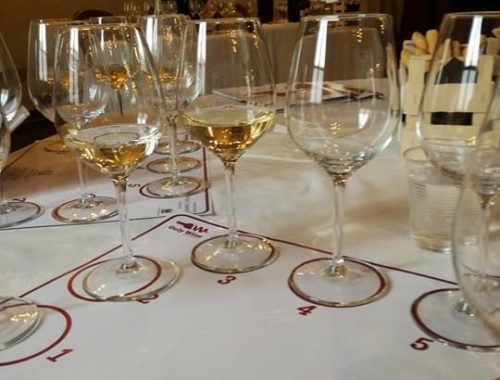The goal of the Dei Micheli family is to valorize Bardolino, a distinctive wine of the production area of Garda Lake in Northern Italy.
The dream began in 1995 when they bought a single block of 30 hectares (74 acres), a property called “La Presa” in Caprino Veronese, to be added to the 15 hectares (37 acres) they already owned. They proceed with further purchases for a total, to date, of 130 hectares (321 acres) and two cellars along with a “Wine Relais” of great charm that is developed around a house of the 1400 in the center of the above-mentioned estate at the foot of Baldo Mount.
The vineyards of Tenuta La Presa (in Veneto region, Northern Italy), under integrated management system, are characterized by soils if morainic origin and significant heterogeneity, within a crown of mountains between Rivoli and Caprino Veronese towns with a unique microclimate defined by the winds of the Adige Valley and the mild influence of Garda Lake. A work of enhancement that will be complete from next autumn on thanks to a zoning work that will allow to maximize the expressiveness of Bardolino, breaking even residual prejudices of any kind, including the” need” to always prefer the latest vintage.
The total production is 300.000 bottles a year for 3 labels: the white, Lugana DOC; the rosé: Bardolino Chiaretto DOC; the red: Bardolino DOC released at least one year after the harvest, in part subjected to carbonic maceration, vinified and aged in cement and big oak casks. Finally, Napoleone (Rosso Veronese IGT), a blend of Corvina, Cabernet Sauvignon and Merlot produced thought drying grapes and aged in wooden casks of different size and origin to be combined according to the vintage.
My focus, especially after the launch of the guide to the best rosé wines in Italy (still and sparkling) of the 50 Top editorial group: 50 Top Italy Rosé, has surely been the rosè thanks to the opportunity to share a vertical tasting of Bardolino Chiaretto from 2014 to 2020 with the owner Fabio (Dei Micheli).
Having tasted old vintages in perfect shape, starting from the color itself, remains the main fact. The appellation is Bardolino Chiaretto DOC, blend of Corvina (80/85%) and Rondinella with a low percentage of Sangiovese and Molinara, it is obtained from soft crushing early in the morning, vinified in stainless steel.
Here are some brief notes for fun:
- 2014: definitely intense on the nose with notes of red orange and walnuts, sugared almonds and pencil. Full and still lively thanks also to a pleasant savory finish. Clean, precise, lively and fine.
- 2015: fruitier than the previous one, the orange is now candied and is accompanied by notes of face powder and wild strawberry with an iodized background. Round and welcoming, fuller and less integrated.
- 2016: tangerine and orange blossom then fennel. Full but shorter with an almondy finish.
- 2017: the nose opens to the exotic with aromas of pink grapefruit, pineapple and tomato leaf. On the palate offers a refreshing acidity and a savory touch.
- 2018: welcoming nose with notes of peach and watermelon then sage and cedar. On the palate it is less smooth/velvety compared to the previous ones, still lively.
- 2019: honey, red apple, hints of ash, dried bay leaf. More bodied, still savory, dry and ripe.
- 2020: exuberant nose due to the age with raspberry, mandarin and rosemary aromas. Consistent on the palate with a fruity, balanced and layered finish. The potential for ageing is clear.
To close, I found Fabio Dei Micheli’s reading of the aging of rosé wine interesting: a vintage rosé is seasonal and easily matches the needs and dishes of spring-summer season. If aged, it is enriched with nuances that allow it to last longer and be appreciated even in winter.











